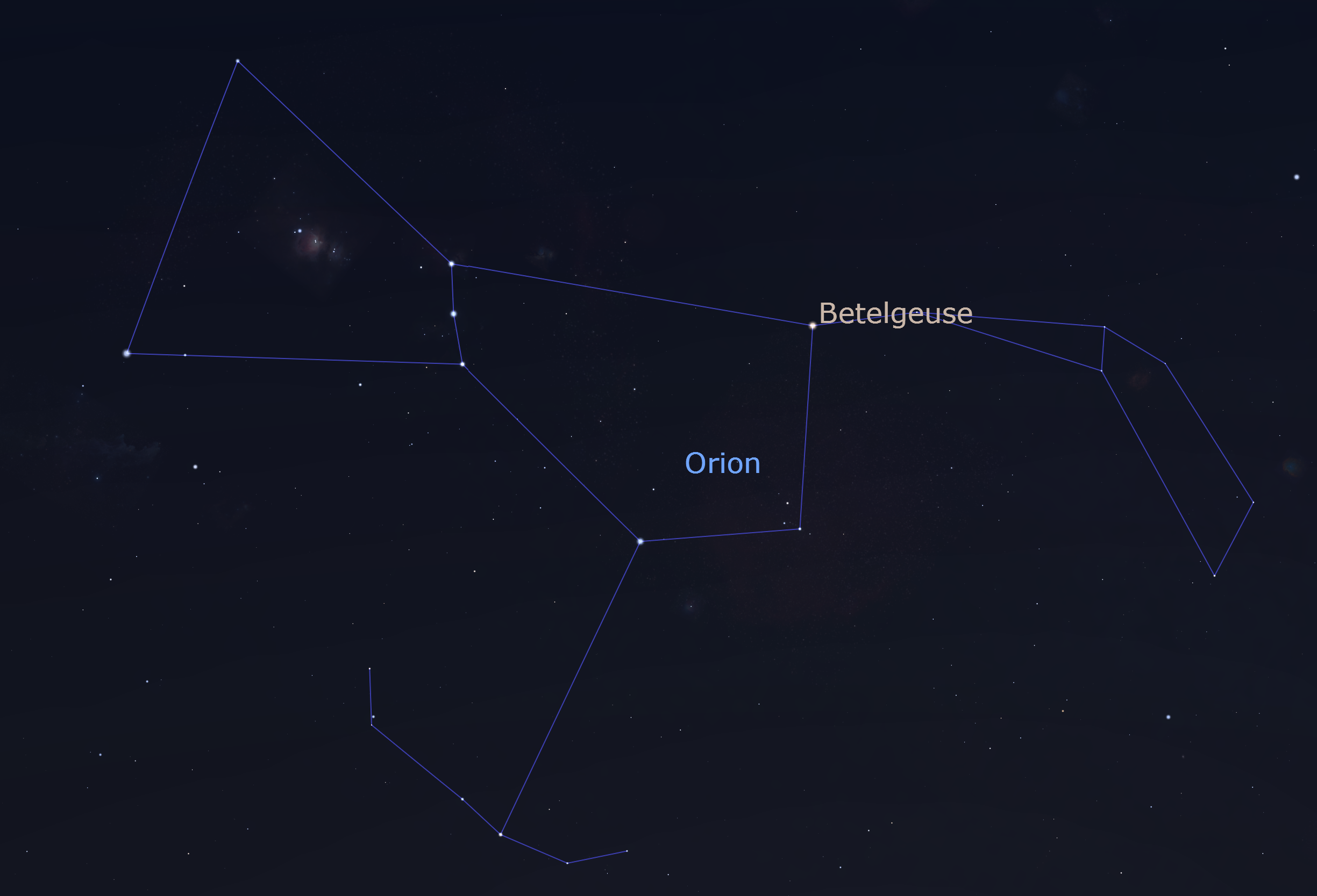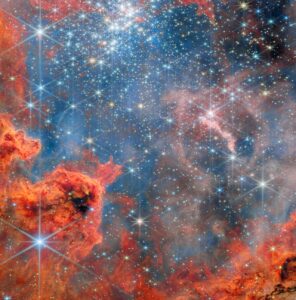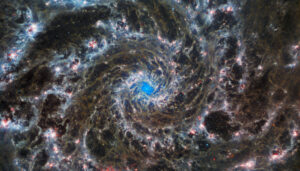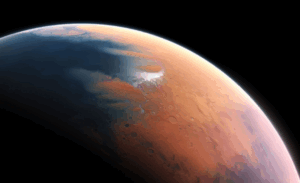We all know about Betelgeuse, the red supergiant star in the constellation of Orion.
At about 11 million years old and 16 times heavier than the Sun, Betelgeuse is the closest red supergiant star to us, a staggering 700 times larger than the Sun.
Put another way, if you replaced the Sun with Betelgeuse, the outer edges of the star would reach all the way past Jupiter.
Caption: The Solar System with the Sun replaced by Betelgeuse.
Credit: ALMA (ESO/NAOJ/NRAO)/E. O’Gorman/P. Kervella
VARIOUS VARIABLES
Betelgeuse is a variable star, which is to say its brightness changes over time. The star gets brighter and darker every 400 days or so as the star grows and shrinks – think of it a bit like breathing.
Variable stars are quite common, with various physical mechanisms explaining their changing brightness.
Caption: The variable brightness of Betelgeuse including the ‘Great Dimming‘ of 2019/20.
Credit: Pilate et. al 2024, CC BY 4.0
But there seems to be another more subtle change in brightness of Betelgeuse every 6 years, and astronomers just couldn’t find an explanation that properly described it.
Some scientists speculated this was caused by a companion star on a six-year long orbit stirring up Betelgeuse’s outer atmosphere. This would match the data, and it’s a nice idea, but a good hypothesis has to hold up to observational fact.
THEY CAME, THEY SAW, THEY PREDICTED
Because Betelgeuse has such a long and detailed observational history, astronomers were able to make highly accurate predictions about the orbit of this hypothetical companion star.
They predicted that if this star existed, it would be furthest from Betelgeuse (and thus the easiest to see) on 18 December 2024. So, late last year, scientists used the ‘Alopeke instrument on the Gemini North telescope in Hawaii to look for it.
Caption: The Gemini North observatory houses the ‘Alopeke instrument.
Credit: Noirlab
Atmospheric turbulence is the bane of all ground-based astronomy, causing stars to ‘twinkle’.
While somewhat pleasant for backyard stargazing, for professional astronomers this means that pictures of distant objects tend to ‘smear out’, making it very difficult to focus on small targets like stars in great detail.
EXPOSING ITSELF
The ‘Alopeke instrument takes a novel approach to this problem. Instead of taking long exposure pictures – during which time the turbulence in the atmosphere smears out stars – it takes hundreds of pictures per second, each exposure only a few milliseconds long.
This essentially ‘freezes out’ any atmospheric distortion, which can be accounted for later, without smearing the image of the star.
In the end, the astronomers took 6000 pictures of Betelgeuse in this way. And what was the result?
Caption: Betelgeuse’s companion star (blue, lower left) and Betelgeuse (orange, centre).
Credit: Howell et. al 2025
This detection, if verified by future observations, is a stunning confirmation of the predictive power of good science.
Analysing all the data takes considerable time, and by now the star is once again lost in the glare of Betelgeuse. According to orbit modelling, the next time to see the star at its greatest distance from Betelgeuse will be in November 2027.
There will be no shortage of astronomers ready to try and catch a glimpse of it.









